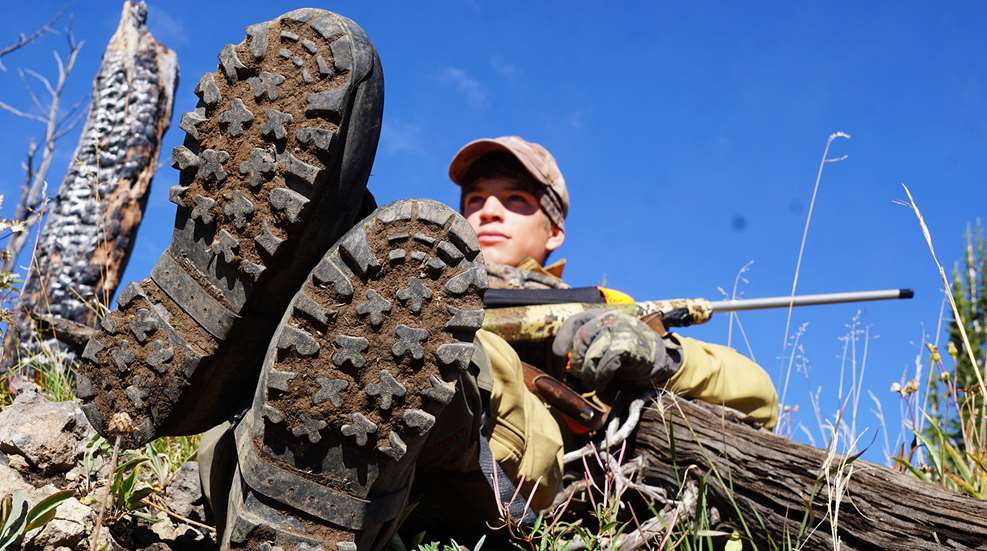
Hunting Western big game demands mobility; you must be able to cover large distances to find game, climb to glassing vantages and access remote territory. A lot of elements contribute to your ability to cover ground including physical fitness, mental toughness, lightweight gear, use of trekking poles and so on. But the number one thing you must get right is your footwear. Do so, and you’ll hunt hard and well. Fail to get your shoes right, and your hunt will be over. It’s that simple, and that important.
Before diving into what makes a great hunting boot and what designs are suitable for which conditions, let’s talk a minute about breaking in your footwear. In a nutshell, you need to spend a lot of time wearing your hunting boots around home, at work or while mowing the lawn before ever heading afield in them.
Most boots need to be well broken in, and this takes time. They’re made of stiff leather and/or synthetics, and those materials need to soften and become limber and flexible in key places. Laces need to find their home and settle in. The footbed needs to conform to your foot. And, just as importantly, your feet need to get toughened up and accustomed to the boots so they don’t easily develop blisters and soreness. Wear your new hunting boots every chance you get during the weeks leading up to the hunt.
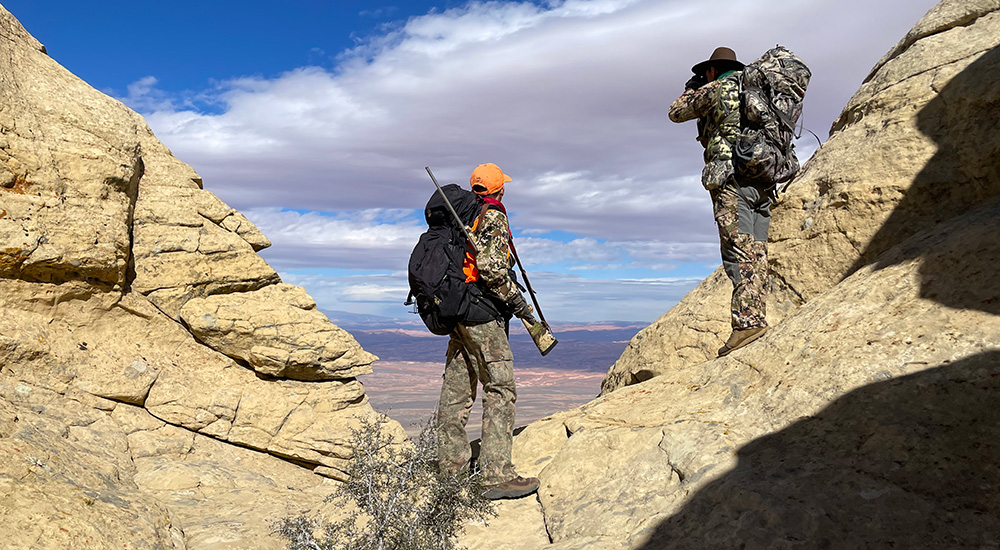
Early-Season: Fast and Light
Early season hunting in the West can begin as early as August, and reaches into the Indian summer days of September or even October. Temperatures are moderate, beginning as low as 25-degrees in the mornings and often reaching as high as the 80s during midday. There’s no snow to deal with, and weather is often dry. You’ll likely need to travel miles during your day of hunting, especially when bowhunting elk or stalking pronghorn or mule deer. For this type of hunt, I recommend the lightest footwear you can find. Many experienced hunters use simple tennis shoes. Unless the weather is wet, a non-waterproof shoe is best because it will breath far better than any waterproof footwear. Good traction is important, so avoid footwear with a smooth sole built for running on pavement. Also avoid heavy lug soles that will collect mud and clay. Lastly, try to find a shoe with tops that reach up your ankle a bit. This will help prevent grass seeds and stickers from getting into your socks and chewing into your ankles.
There is one caveat to using these ultralight shoes for hunting—your ankles must be sound. If you have weak ankles, or a history of injury to your ankles, you should wear boots that provide solid ankle support. Rough, rocky terrain or carrying a heavy backpack can take a toll on your joints, so make sure you’re adequately equipped. Better to cope with heavy boots than to sprain an ankle or aggravate an old injury. I grew up wearing cowboy boots and hunting in leather moccasins, neither of which offer any ankle support, so my ankles are strong. I chafe (literally as well as figuratively) when wearing heavy, stiff boots.
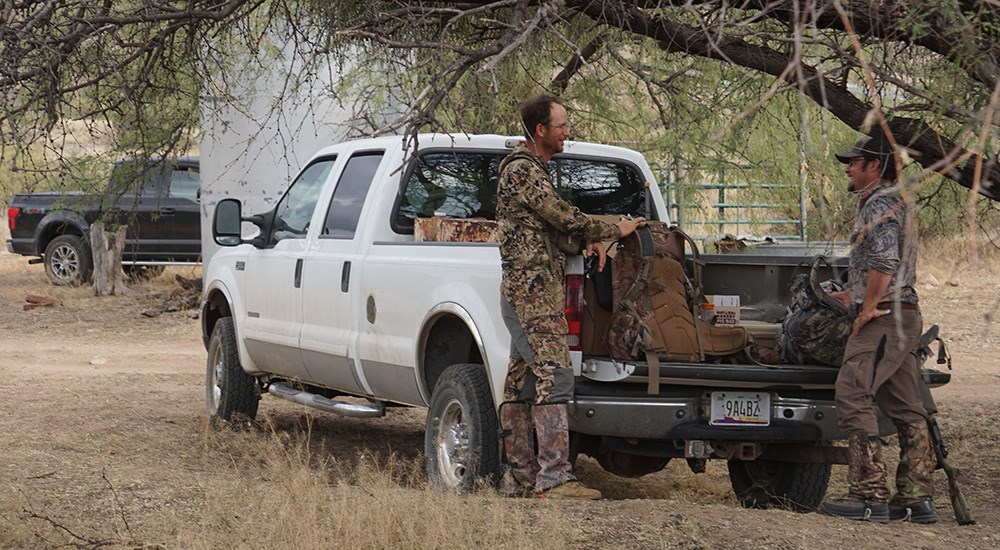
I’ve worn many types of early-season boots, and the one’s I’ve liked the best are a superlight tactical-style boot from Danner. They’re called the Tachyon and weigh in at only 26 ounces per pair. That’s only 13 ounces on each foot, and as the old saying goes, “Ounces off your feet mean miles on the trail.” You’ll move well and cover extra miles with this kind of boot on your feet. They last well and offer one of the toughest, most flexible, grippy soles I’ve ever used. They’re available in a tan “Coyote” color that works well for hunting.
If you need ankle support and a heavier boot, take a good look at Danner’s Pronghorn line, as well as Kenetrek’s Corrie II Hiker. Either will serve you well.
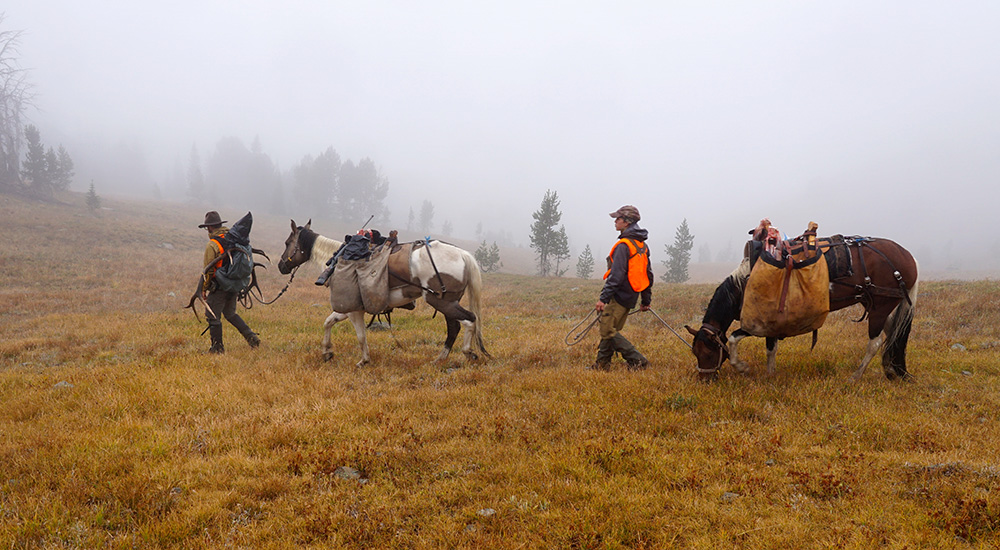
Mid-Season: Warm and Waterproof
As the season progresses, temps turn cold and precipitation becomes part of the hunt, you’ll need warmer, waterproof boots. This is the time of year when snow may fall and temperatures will begin to get cold. You may still need to cover a lot of ground to find game, but there will be frosty mornings or evenings when you must sit and glass or post up over a hidden meadow. If your feet get wet and cold, it’s hard to hunt effectively. But here’s the thing none of the retailers will tell you about waterproof boots: waterproof membranes and linings have a short effective life. Gore-Tex and others of that ilk will fatigue when flexed repeatedly. Eventually, those fatigued areas can no longer hold water at bay. Since you’ll be covering many miles during your Western hunt, that membrane will fatigue rapidly, and even high-quality, well-made boots may start to leak as early as your second day in the field. If you’ve broken your boots in correctly, the membrane may be fatigued and leaky before you ever arrive at the trailhead.
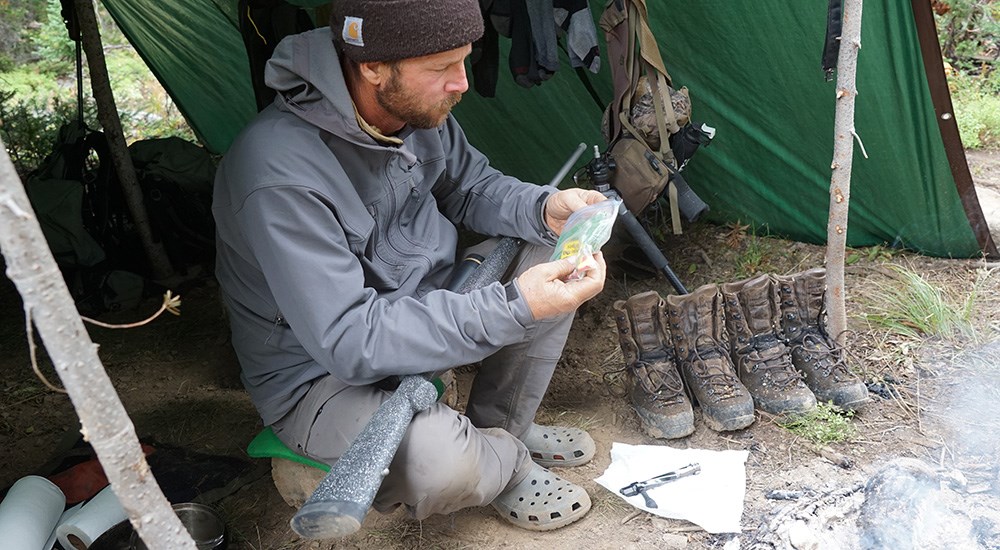
In my opinion, the best waterproof mid-season boots feature a full leather exterior because you can keep the leather waterproof by treating it with wax or oil. Yes, leather is a bit heavier than cordura-type material, but cordura is impossible to waterproof. Once that membrane fails—and it will—your footwear will no longer keep your feet dry.
Mid-season boots should sport 400 to 600 grams of insulation. You can adjust warmth to suit local conditions by using thicker or thinner wool socks. If snow or heavy morning dew is present, a good set of gaiters will help keep your feet and legs clean, dry, and warm.
Danner makes insulated Pronghorns well-suited to the mid-season, but the finest mid-season hunting boot I’ve worn is Kenetrek’s Mountain Extreme. These boots feel like coming home for Christmas every time you pull them on. They feature a full leather exterior and are tough as nails. They’re heavy, but that’s the price you pay for a good insulated, waterproof boot.
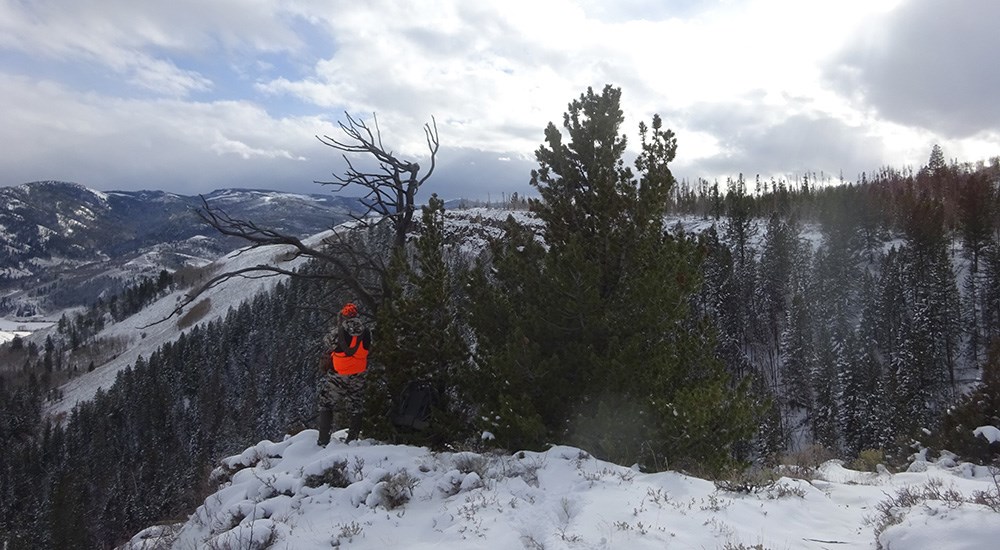
Late-Season: Snow-proof and Insulated
Hunting in sub-zero temperatures is challenging, and one of the hardest things to do is keep your feet warm. It’s not too bad while hiking through knee-deep snow en route to your vantage spot, but as soon as you stop moving, that minus-20 cold starts to penetrate ruthlessly. Your toes will go first, and then your entire foot will become cold and stiff. Without suitable footwear your hunt will be over almost before it starts.
Good late-season boots should be roomy and heavily insulated. They’ll need to be calf-high to keep snow and ice from getting inside, and they need to be waterproof for those days when everything starts to melt and the woods turn into a sopping mess. These boots will feel ponderous on your feet, but that’s far better than fitted boots that will let the cold penetrate. Boots with a rubber foot and leather upper seems to work the best, especially when paired with removable felt liners that can be pulled out and dried. You can wax the leather tops to keep them soft, waterproof and healthy. This type of footwear are often called “pack boots” by those who use them a lot, and most experienced hunters prefer an “air-bob” type sole (the kind with lots of round knobs sticking down) over a lug-type sole because it offers superior traction and will shed snow, ice and mud better. I don’t have a great model or manufacture to recommend, so just shop until you find a boot that meets the criteria outlined above and feels good on your feet.
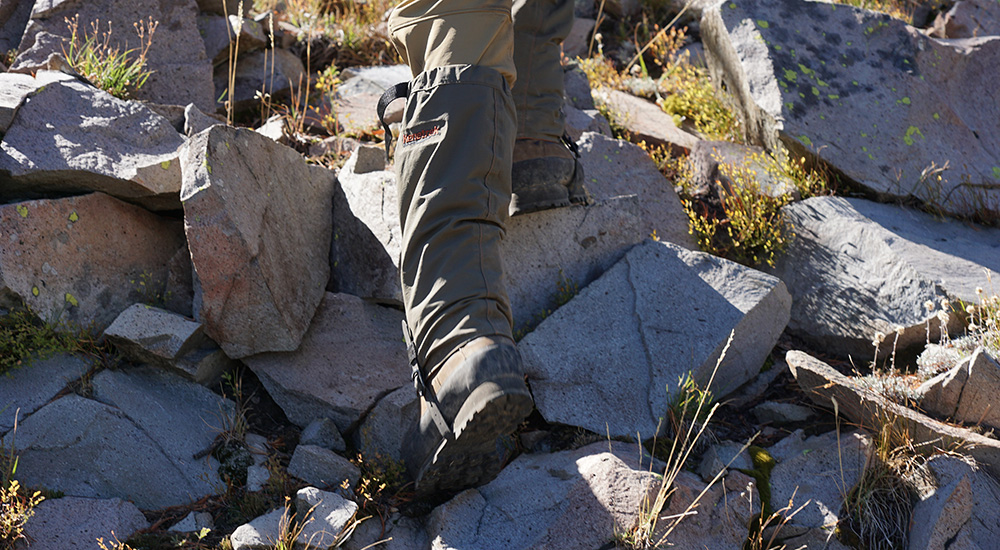
Conclusion
Choosing the right boots for your Western hunt can be critical to success. While shopping, take your time—choose a boot suited to anticipated conditions, and make sure it fits right and feels great on your feet. Never buy cheap boots—they might make your pocketbook happy but they will make your feet sad. Get high-quality boots that will carry you into the backcountry, get you to the game and help you pack it out. You won’t regret it.




































